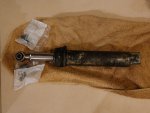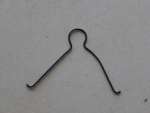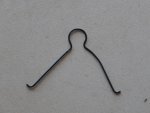Air con oddity
Have noticed that the XMs air con compressor cuts in and out - just like the hydraulic pump! Perhaps it's a Citroen thing, but my Xantia doesn't do it - at least not in the current mild-warm conditions.
- at least not in the current mild-warm conditions.
Ambient temp today in low 20s. If I set cabin temp slightly lower, compressor runs for 15 secs, then rests for just under 10 secs. If I reduce cabin temp to 15C, the run time extends to 30-35 sec, with rest time about 5 sec.
If I manually set cabin fan to maximum speed, the compressor will keep running, but if I reduce the cabin fan speed even one notch, it resumes cycling. Yesterday afternoon was significantly hotter, and I noticed then that it was cycling.
Can anyone shed any light? Even with the cycling, the air con seems reasonably effective, but surely the cycling behaviour must shorten the life of components such as compressor clutch, relays etc...
Cheers
Alec
Have noticed that the XMs air con compressor cuts in and out - just like the hydraulic pump! Perhaps it's a Citroen thing, but my Xantia doesn't do it
Ambient temp today in low 20s. If I set cabin temp slightly lower, compressor runs for 15 secs, then rests for just under 10 secs. If I reduce cabin temp to 15C, the run time extends to 30-35 sec, with rest time about 5 sec.
If I manually set cabin fan to maximum speed, the compressor will keep running, but if I reduce the cabin fan speed even one notch, it resumes cycling. Yesterday afternoon was significantly hotter, and I noticed then that it was cycling.
Can anyone shed any light? Even with the cycling, the air con seems reasonably effective, but surely the cycling behaviour must shorten the life of components such as compressor clutch, relays etc...
Cheers
Alec



 .
.
